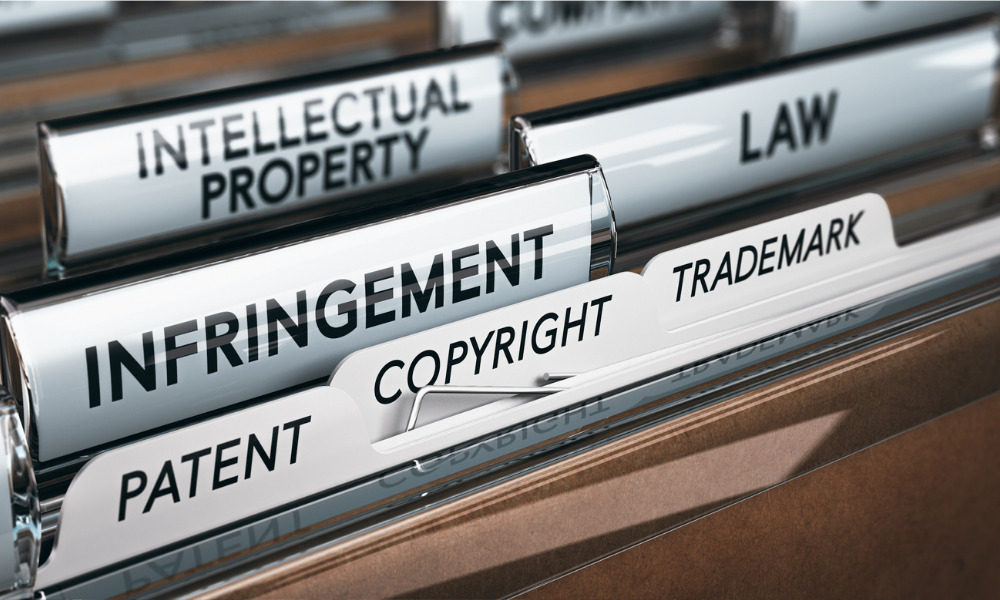In Canada, there are five (5) types of intellectual property (IP), which can be infringed in various ways:
- Patents
- Industrial Designs
- Trademarks
- Copyrights
- Trade Secrets
Each type has its own law that defines the specific IP and governs the process of its registration with the Canadian Intellectual Property Office (CIPO). Most importantly, it also outlines the different ways that that IP may be infringed.
Specific Canadian IP laws prescribe the jurisdiction of the courts, its prosecution, and the penalties or fines involved.
What is considered intellectual property infringement in Canada?
Infringement of intellectual property is defined as the unauthorized, unconsented, or illegal use, sale, or distribution of an IP. Infringement will depend on each country’s specific IP laws as the source of the IP right being violated. It also defines the specific offence or liability and the different ways to enforce these IP rights.
The Canadian IP laws that govern infringement of intellectual property are:
- Patent Act;
- Industrial Design Act;
- Trademarks Act; and
- Copyright Act.
There is no federal law on trade secrets; however, the theft or infringement of trade secrets – the violation of the confidentiality and secrecy of trade secrets – is governed by Canadian common law on contracts, Canada’s Criminal Code provisions on Trade Secrets (Section 391 (1) and (2), Criminal Code), and Quebec’s Civil Code provisions.
When an infringement of intellectual property is committed, a registrant under any of these IP laws - a proprietor, or a holder of a derived right - may ask the court for a specific relief which may include:
- damages (i.e., compensatory or non-compensatory damages);
- recovery of lost profits;
- injunction; and
- disposal of the infringed product.
Patent Infringement
Under the Patent Act of Canada, the rights granted to the patent holder or patentee (the person or the entity who registered the patent before the CIPO) for a period of 20 years include the exclusive right, privilege, and liberty to create, construct, use, and sell the patented invention (Section 42, Patent Act).
Both the Act and common law state that any breach of these rights results in infringement of intellectual property.
Patent infringement is committed in two ways:
- Direct patent infringement: any act (either the making, constructing, using, or selling) that violates the patentee’s rights under Section 42 of the Patent Act; and
- Indirect patent infringement: when a third party induces another to commit any of the acts that violate the patentee’s rights under Section 42 of the Patent Act.
Action for Patent Infringement
In filing an action for patent infringement, the patent holder or the exclusive and non-exclusive licensees may bring the case to the appropriate court. The patent must be presented, including pieces of evidence proving that an infringement took place.
Learn the consequences of intellectual property infringement in this article.
Jurisdiction of Courts
When an action for damages for infringement of a patented invention is filed, the provincial court which is the nearest to the defendant or where the alleged infringement took place shall have jurisdiction over the case (Section 54 (1), Patent Act).
A case for conflicting patent applications and an action to impeach or annul a patent of invention are brought before the Federal Court of Canada (Section 20 (1) (a) and (b), Federal Courts Act).
Infringement of Industrial Designs
Under the Industrial Design Act (IDA), a proprietor registers their industrial design with the CIPO is given the exclusive right over the industrial design (Section 9, IDA) for 10 years (Section 10 (1) (b), IDA). Any use of the industrial design without the consent or licence of the proprietor results in infringement of industrial design.
Infringement is committed when the unlicensed person (Section 11, IDA):
- makes or imports, for the purpose of trade or business, a product whose design is substantially similar with the registered industrial design;
- sells, rents, or offers, or exposes to sell or rent out a product whose design is substantially similar with the registered industrial design; or
- makes, imports, sells, or rents out a product, that when assembled from a kit (which consists of different parts which may be assembled to construct a finished product), would constitute infringement of a registered industrial design.
Action for Industrial Design Infringement
An action against the infringer of an industrial design may be brought by either:
- the proprietor of the industrial design registration,
- the proprietor’s exclusive and non-exclusive licensees, or
- the purchaser of the products bearing the registered industrial design.
Such action may be brought before any court of competent jurisdiction (Section 15 (1), IDA) or with the Federal Court of Canada having concurrent jurisdiction over the case (Section 15.2, IDA).
It must be proven in court that the registered industrial design and the product that is alleged to bear the infringed industrial design are substantially similar.
There are several ways of enforcing your IP rights:
To protect yourself against infringement of intellectual property, it would be best to speak with a lawyer in your province or territory. For example, consult with one of the top intellectual property lawyers in Ontario if you are from that area.
Infringement of Trademarks
Intellectual property infringement, specifically trademarks and trade names, may be committed when there is a violation of the rights granted along with trademark registration.
Trademark registration grants the exclusive right to use the trademark throughout Canada (Section 19, Trademarks Act).
Any of these acts result in an infringement of a trademark or trade name (Section 20, Trademarks Act):
- sale (including offering to sell), distribution, or advertisement of any goods or services, or any label or packaging, that have the infringed or confusing trademark or trade name; or
- manufacture, possession, importation, or exportation (including attempting to export), of any goods, label, or packaging which bear the infringed or confusing trademark or trade name, for the purpose of its sale or distribution.
Action for Infringement of Trademarks or Trade Names
Action on infringement of trademarks or trade names may be filed before the Federal Court of Canada (Section 55, Trademarks Act) or any provincial court.
The owner of the registered trademark or their licensees may bring this action before the court. They should present the registered trademark and evidence that the alleged infringer has been using a similar trademark or trade name which might cause confusion between the original and the infringed one.
Copyright Infringement
Although a copyright attaches automatically when an original work is created, its registration with the CIPO will bolster a court action when an infringement of the intellectual property takes place. This infringement of a copyright may be done directly (Section 27 (1), Copyright Act) or indirectly (Section 27 (2), Copyright Act):
- Direct or General Infringement: when a person does any act that is under the exclusive right of the owner of the copyright, and when it is done without the consent or license of the owner;
- Indirect or Secondary Infringement: when a person sells, rents out, distributes, or imports an original work or creation, where the ownership of the copyright is known (or should have been known) to such person, and when the act is done without the consent or license of the copyright owner.
Action for Copyright Infringement
Cases for copyright infringement may also be filed before the provincial courts or with the Federal Court of Canada. Aside from the owner of the copyright and their licensees and non-exclusive licensees, a person who has a right, title, or interest from the owner of the copyright, either by assignment or through any other contract, may also sue for copyright infringement.
Got some queries regarding infringement of intellectual property in Canada? Ask us by commenting down below or ask any of the Lexpert-ranked best Canadian intellectual property lawyers for more info.





